- Current Affairs
- Pakistan Affairs
- World In Focus
- ESSAYS: CSS/PMS/PCS
- English (Precis & Composition)
- Pakistan Affairs MCQS
- Islamic Studies MCQS
- General Science & Ability MCQS
- Mathematics
- Everyday Science
- Scholarships
- Etimes Urdu
- Our Services


Gender equality: A popular slogan: CSS Essay 2021
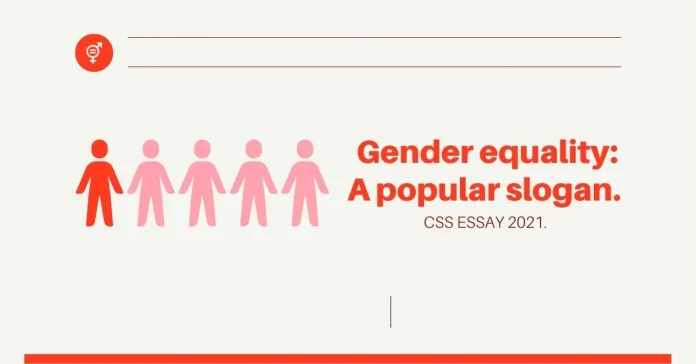
Table of Contents
Thesis statement
While gender equality is a popular slogan, its achievement requires addressing deep-rooted societal norms, systemic barriers, and cultural biases.
Introduction
Gender equality has been a rallying cry for social justice movements around the world. It is a concept that resonates with people across cultures and generations, representing a vision of a fair and equitable society. However, the achievement of gender equality is far from simple. It requires addressing deep-rooted societal norms, systemic barriers, and cultural biases that perpetuate gender disparities. In this essay we explore the complexities of gender equality, highlighting the challenges faced and the importance of its realization.
Exposition: Understanding Gender Equality
Gender equality refers to the equal rights, opportunities, and treatment of individuals, regardless of their gender identity. It encompasses the goal of eradicating gender-based discrimination and creating a society where everyone has equal access to resources, power, and decision-making. While the concept of gender equality has gained traction in recent decades, progress has been uneven across regions and sectors.
Description: Gender Disparities and Inequality
To comprehend the significance of gender equality, it is essential to recognize the existing gender disparities and inequalities that persist in various domains.
The gender pay gap remains a prominent issue globally. Statistics reveal that women, on average, earn less than their male counterparts for comparable work. Factors such as occupational segregation, stereotypes, and limited access to higher-paying positions contribute to this gap.
Moreover, women continue to be underrepresented in leadership roles in both the public and private sectors. Structural barriers, biased promotion practices, and lack of representation perpetuate gender disparities in decision-making processes and impede progress toward equality.
Gender-based violence and discrimination pose additional challenges. Women and girls disproportionately face various forms of violence, including domestic violence, sexual assault, and harassment. Discriminatory practices in education, employment, and healthcare limit their opportunities and hinder their full participation in society.
Argumentation: Factors Hindering Gender Equality
The achievement of gender equality is hindered by several factors deeply ingrained in society.
Societal norms and cultural biases perpetuate gender stereotypes and reinforce traditional gender roles. These norms and biases shape expectations and social pressures that limit individual choices and opportunities. The perception that certain professions or roles are better suited for one gender over another creates barriers and restricts career options.
Systemic barriers and institutionalized discrimination also contribute to gender inequality. The absence of policies that support work-life balance, such as affordable childcare and parental leave, disproportionately affects women’s career progression. Biased hiring and promotion practices based on gender further exacerbate disparities and hinder equal opportunities.
Furthermore, limited access to education and healthcare continues to impede gender equality. Gender gaps in education, particularly in developing countries, deny girls the opportunity to develop their full potential. Inadequate healthcare services and cultural taboos surrounding women’s health issues further restrict their well-being and overall empowerment.
Argumentation: The Importance of Gender Equality
Gender equality is not merely a slogan; it is essential for social, economic, and cultural progress.
From an economic standpoint, closing the gender pay gap and promoting gender equality in the workforce contribute to economic growth and development. When women have equal access to employment opportunities, the talent pool expands, driving innovation and productivity. Furthermore, diverse and inclusive workplaces foster creativity, problem-solving, and better decision-making.
Beyond economic benefits, gender equality is crucial for social justice and human rights. It challenges harmful gender norms and stereotypes, promoting a more inclusive and tolerant society. By ensuring equal rights and opportunities for all individuals, regardless of their gender, we create a more just and equitable world.
Narration: Progress and Promising Initiatives
While challenges persist, there have been significant strides toward gender equality. Legislative reforms and policy changes have played a crucial role in advancing gender equality. Examples include the introduction of laws to combat gender-based violence, promote pay equity, and establish quotas for women’s representation in political and corporate spheres. International agreements, such as the United Nations Sustainable Development Goals and the Convention on the Elimination of All Forms of Discrimination against Women, provide a framework for action and accountability.
Grassroots movements and advocacy have also been instrumental in driving change. Campaigns like the #MeToo movement and global initiatives for women’s rights have shed light on gender-based violence, sparked conversations, and mobilized communities. These movements have raised awareness, challenged societal norms, and pushed for policy reforms, fostering a more inclusive and equal society.
Gender equality remains an ongoing struggle that requires collective efforts. While it may be a popular slogan, achieving true gender equality demands addressing deep-rooted societal norms, systemic barriers, and cultural biases. By acknowledging the persistent gender disparities, advocating for policy changes, challenging stereotypes, and promoting inclusive practices, we can pave the way for a more equitable and just future. Let us work together to turn the slogan of gender equality into a lived reality for all individuals, regardless of their gender identity.
RELATED ARTICLES MORE FROM AUTHOR
Boys will be boys css essay 2022, is pakistan ready for the digital revolution css essay 2020, i do not agree with what you have to say, but i’ll defend to the death your right to say it. css essay 2020, leave a reply cancel reply.
Save my name, email, and website in this browser for the next time I comment.
- Privacy Policy
Gender Inequality Essay
500+ words essay on gender inequality.
For many years, the dominant gender has been men while women were the minority. It was mostly because men earned the money and women looked after the house and children. Similarly, they didn’t have any rights as well. However, as time passed by, things started changing slowly. Nonetheless, they are far from perfect. Gender inequality remains a serious issue in today’s time. Thus, this gender inequality essay will highlight its impact and how we can fight against it.

About Gender Inequality Essay
Gender inequality refers to the unequal and biased treatment of individuals on the basis of their gender. This inequality happens because of socially constructed gender roles. It happens when an individual of a specific gender is given different or disadvantageous treatment in comparison to a person of the other gender in the same circumstance.
Get the huge list of more than 500 Essay Topics and Ideas
Impact of Gender Inequality
The biggest problem we’re facing is that a lot of people still see gender inequality as a women’s issue. However, by gender, we refer to all genders including male, female, transgender and others.
When we empower all genders especially the marginalized ones, they can lead their lives freely. Moreover, gender inequality results in not letting people speak their minds. Ultimately, it hampers their future and compromises it.
History is proof that fighting gender inequality has resulted in stable and safe societies. Due to gender inequality, we have a gender pay gap. Similarly, it also exposes certain genders to violence and discrimination.
In addition, they also get objectified and receive socioeconomic inequality. All of this ultimately results in severe anxiety, depression and even low self-esteem. Therefore, we must all recognize that gender inequality harms genders of all kinds. We must work collectively to stop these long-lasting consequences and this gender inequality essay will tell you how.
How to Fight Gender Inequality
Gender inequality is an old-age issue that won’t resolve within a few days. Similarly, achieving the goal of equality is also not going to be an easy one. We must start by breaking it down and allow it time to go away.
Firstly, we must focus on eradicating this problem through education. In other words, we must teach our young ones to counter gender stereotypes from their childhood.
Similarly, it is essential to ensure that they hold on to the very same beliefs till they turn old. We must show them how sports are not gender-biased.
Further, we must promote equality in the fields of labour. For instance, some people believe that women cannot do certain jobs like men. However, that is not the case. We can also get celebrities on board to promote and implant the idea of equality in people’s brains.
All in all, humanity needs men and women to continue. Thus, inequality will get us nowhere. To conclude the gender inequality essay, we need to get rid of the old-age traditions and mentality. We must teach everyone, especially the boys all about equality and respect. It requires quite a lot of work but it is possible. We can work together and achieve equal respect and opportunities for all genders alike.
FAQ of Gender Inequality Essay
Question 1: What is gender inequality?
Answer 1: Gender inequality refers to the unequal and biased treatment of individuals on the basis of their gender. This inequality happens because of socially constructed gender roles. It happens when an individual of a specific gender is given different or disadvantageous treatment in comparison to a person of the other gender in the same circumstance.
Question 2: How does gender inequality impact us?
Answer 2: The gender inequality essay tells us that gender inequality impacts us badly. It takes away opportunities from deserving people. Moreover, it results in discriminatory behaviour towards people of a certain gender. Finally, it also puts people of a certain gender in dangerous situations.
Customize your course in 30 seconds
Which class are you in.

- Travelling Essay
- Picnic Essay
- Our Country Essay
- My Parents Essay
- Essay on Favourite Personality
- Essay on Memorable Day of My Life
- Essay on Knowledge is Power
- Essay on Gurpurab
- Essay on My Favourite Season
- Essay on Types of Sports
Leave a Reply Cancel reply
Your email address will not be published. Required fields are marked *
Download the App

- Monthly DAWN Editorials
- Monthly Global Point
- Foreign Affairs Magazines
- The Economist Magazines
- Time Magazines
- Pakistan & India
- Pakistan & USA
- Pakistan & China
- Essay Books
- English Composition Books
- Pakistan Affairs
- Current Affairs
- General Science and Ability
- Islamic Studies
- Essays Books
- English Precis and Compositions Books
- Current Affairs Books
- Pakistan Affairs Books
- General Science and Ability Books
- Islamic Studies Books
- Download Optional Books
- Buy CSS Optional Books
- CSS Syllabus
- CSS Past Papers

- CSS Rules & Regulations
- Buy CSS PMS Books Online
- Uncategorized
Gender Inequality | Editorial
PAKISTAN is the second worst country to be a woman when it comes to gender equality, declares a recent World Economic Forum report. Ranking 148 out of 149 countries in the Global Gender Gap Index 2018 — which incorporated the latest statistics from international organisations along with a survey of executives to look into education, health, economic opportunity and political empowerment — the number of women holding managerial positions is one of the lowest. Other low-performing countries include Egypt, Saudi Arabia and Yemen. It was also the lowest-ranked country in South Asia, as it closed 55pc of its overall gender gap, compared to Bangladesh and Sri Lanka that closed just over 72pc and nearly 68pc of their overall gender gap. While the country made some progress in wage equality and the education attainment sub-index, it ranked 146 in economic participation and opportunity, and 145 in health and survival. In terms of political empowerment, the country was positioned at 97.
The report was received with scepticism, especially given that Pakistan was ranked even lower than countries such as Saudi Arabia and Yemen, where women are less visible in the workforce and public life. While one can certainly question the report’s methodology and findings, the government should not outright dismiss the findings, given that the country consistently performs poorly in international reports and indices when it comes to women’s rights and empowerment. A few months ago, a gender audit by the Women’s Action for Better Workplaces found that Pakistan’s labour laws do not create an enabling working environment for women. Additionally, sexual harassment and regressive cultural attitudes keep them from performing to their full potential or out of the workforce entirely. Another UN report from earlier this year found that 4.9m women between the ages of 19 and 49 years were disadvantaged in four SDG-related dimensions, including health. It found that around 48pc of women and girls between the ages 15 and 49 have no say in decisions about their own health, with those in rural areas being particularly disadvantaged. Women are nearly half the population and make up a large chunk of the labour, especially invisible labour and in the informal sector, in both rural and urban settings. But their participation is not equal to their numbers. While Pakistan has made many strides over the years, and has many female citizens to look up to and take pride in, much more needs to be done.
Published in Dawn, December 25th, 2018
Source: https://www.dawn.com/news/1453462/gender-inequality
Please Review
Search book.
Gender Disparity, Its Causes and Consequences Research Paper
- To find inspiration for your paper and overcome writer’s block
- As a source of information (ensure proper referencing)
- As a template for you assignment
Hypothesized Causes
Hypothesized consequences.
Gender disparity is one of the most disturbing and challenging global issues in the contemporary world. In general, this social phenomenon may be described as specific differences in access to status, resources, and well-being for women and men. Gender disparity traditionally favors men and is frequently institutionalized through social norms, justice, and law. The peculiarities of gender disparity related to the men’s superior social position cause gender discrimination. It implies unfair treatment including exclusion, distinction, and restriction based on the female sex, violation of women’s rights, and denial of their opportunities (Zarar, Bukhsh, and Khaskheli 2017). Gender discrimination rejects the equality of women and men and female fundamental freedoms and opportunities in the economic, political, cultural, civil, and social fields.
Despite substantial progress in all spheres of life, women remain vulnerable to discrimination, prejudice, violence, and exploitation all over the world. According to the research of WHO conducted with the Medical Research Council and the London School of Hygiene and Tropical Medicine, 35% of women “have experienced either physical and/or sexual intimate partner violence or non-partner sexual violence” (Al Dosary 2016:165). Discrimination is present even in developed countries “that claim to be champions of women’s rights” (Zarar et al. 2017:1). In a substantive number of organizations, “the gender gap in wages” that implies the different payment for men and women is still observed (Popescu 2016). Meanwhile, gender discrimination and stigmatization are particularly common in developing countries, such as India, Afghanistan, Pakistan, and Bangladesh (Zarar et al. 2017). Women are frequently treated as second-class citizens – they are not allowed to leave the house without the male relative’s permission and spend money on their essential needs (Zarar et al. 2017). The non-implementation of established social regulations may lead to severe legal or domestic punishment.
Women currently remain vulnerable to discrimination, prejudice, violence, and exploitation all over the world because culture and society form gender roles, norms, and stereotypes that may hurt the perception of femininity. For instance, according to cultural and religious norms and traditions of specific communities, a woman is regarded as the man’s property. After marriage, she will not be able to return to her parents or take care of them during old age. That is why the birth of a girl is frequently unwanted. In Islamic culture, women are responsible for covering themselves with a veil and housekeeping regardless of their desires or talents. Traditionally, patriarchal norms deny women’s right to make decisions related to their reproduction and sexuality.
As social norms are accepted both consciously and unconsciously by group members, gender discrimination may be learned as well. The major “agents of gender socialization,” such as family, educational institutions, peer groups, and mass media, have a highly substantial impact on the creation of women’s image (Chambliss and Eglitis 2018:260). Parents traditionally have particular beliefs concerning their children’s behavior based on their gender. In addition, they explicitly or indirectly transmit their vision of other people. Children adopt their parents’ views and may support women’s discrimination in the future if it was common in their family. The focus of mass media and advertising on women’s frequently exaggerated femininity and sexuality, emotional instability, or a lack of independence leads to the negative perception of women as well.
Women currently remain vulnerable to discrimination, prejudice, violence, and exploitation all over the world because a substantial number of communities do not have educational standards and the appropriate level of economic development to reduce gender discrimination. In general, people from high socioeconomic classes and higher educational backgrounds do not support gender discrimination and do not have a prejudice against women (Zarar et al. 2017). Violence against female citizens exists mostly among the representatives of lower socioeconomic classes with a substantively poor educational background.
Because women currently remain vulnerable to discrimination, prejudice, violence, and exploitation all over the world, they frequently suffer from health problems and emotional stress. The act of violence causes a harmful emotional and physical impact on victims. Abused women are typically subjected to anxiety, depression, suicidal behavior, and personality or somatic disorders. Violence may result in crucial physical injuries of the victim’s body as well. The devastating effect of women’s exploitation and discrimination frequently implies the inhibition of their self-determination. Moreover, gender discrimination negatively influences the development of society as women’s talents, skills, potential, and contribution to the communities’ growth are highly essential.
Because women currently remain vulnerable to discrimination, prejudice, violence, and exploitation all over the world, feminist organizations are expanding operations worldwide. In general, feminism may be defined as a historical, social, and political movement that aims to provide social, economic, political, and personal gender equality. Due to feminism, women may vote, study, choose the place of work, make decisions concerning their reproduction, control money, and have their property. However, women’s rights are currently violated in various societies across the globe. That is why feminists organize missions to support women in developing countries.
Al Dosary, Ahmad Hamad. 2016. “Health Impact of Domestic Violence against Saudi Women: Cross Sectional Study.” International Journal of Health Sciences 10(2): 165-173.
Chambliss, William J., and Daina S. Eglitis. 2018. Discover Sociology . 3 rd ed. Thousand Oaks, CA: Sage.
Popescu, Gheorghe H. 2016. “Gender, Work, and Wages: Patterns of Female Participation in the Labor Market .” Journal of Self-Governance and Management Economics 4(1): 128-134.
Zarar, Rukhshanda, Muneera Moula Bukhsh, and Waheed Akbar Khaskheli. 2017.” Causes and Consequences of Gender Discrimination against Women in Quetta City.” Arts and Social Sciences Journal 8(3):1-6.
- Feminism Interview and the Major Aim of Feminism
- Feminism in the Past and Nowadays
- The Contemporary Image of Feminism
- Legal Issue: A Working Dress Code
- Gender Equality in Finland and the U.S.
- The Economy of Kinship
- Women’s Rights and Gender Inequality in Saudi Arabia
- "The Price of Inequality" by Joseph Stiglitz
- Chicago (A-D)
- Chicago (N-B)
IvyPanda. (2022, February 14). Gender Disparity, Its Causes and Consequences. https://ivypanda.com/essays/gender-disparity-its-causes-and-consequences/
"Gender Disparity, Its Causes and Consequences." IvyPanda , 14 Feb. 2022, ivypanda.com/essays/gender-disparity-its-causes-and-consequences/.
IvyPanda . (2022) 'Gender Disparity, Its Causes and Consequences'. 14 February.
IvyPanda . 2022. "Gender Disparity, Its Causes and Consequences." February 14, 2022. https://ivypanda.com/essays/gender-disparity-its-causes-and-consequences/.
1. IvyPanda . "Gender Disparity, Its Causes and Consequences." February 14, 2022. https://ivypanda.com/essays/gender-disparity-its-causes-and-consequences/.
Bibliography
IvyPanda . "Gender Disparity, Its Causes and Consequences." February 14, 2022. https://ivypanda.com/essays/gender-disparity-its-causes-and-consequences/.

5 Powerful Essays Advocating for Gender Equality
Gender equality – which becomes reality when all genders are treated fairly and allowed equal opportunities – is a complicated human rights issue for every country in the world. Recent statistics are sobering. According to the World Economic Forum, it will take 108 years to achieve gender parity . The biggest gaps are found in political empowerment and economics. Also, there are currently just six countries that give women and men equal legal work rights. Generally, women are only given ¾ of the rights given to men. To learn more about how gender equality is measured, how it affects both women and men, and what can be done, here are five essays making a fair point.
Take a free course on Gender Equality offered by top universities!
“Countries With Less Gender Equity Have More Women In STEM — Huh?” – Adam Mastroianni and Dakota McCoy
This essay from two Harvard PhD candidates (Mastroianni in psychology and McCoy in biology) takes a closer look at a recent study that showed that in countries with lower gender equity, more women are in STEM. The study’s researchers suggested that this is because women are actually especially interested in STEM fields, and because they are given more choice in Western countries, they go with different careers. Mastroianni and McCoy disagree.
They argue the research actually shows that cultural attitudes and discrimination are impacting women’s interests, and that bias and discrimination is present even in countries with better gender equality. The problem may lie in the Gender Gap Index (GGI), which tracks factors like wage disparity and government representation. To learn why there’s more women in STEM from countries with less gender equality, a more nuanced and complex approach is needed.
“Men’s health is better, too, in countries with more gender equality” – Liz Plank
When it comes to discussions about gender equality, it isn’t uncommon for someone in the room to say, “What about the men?” Achieving gender equality has been difficult because of the underlying belief that giving women more rights and freedom somehow takes rights away from men. The reality, however, is that gender equality is good for everyone. In Liz Plank’s essay, which is an adaption from her book For the Love of Men: A Vision for Mindful Masculinity, she explores how in Iceland, the #1 ranked country for gender equality, men live longer. Plank lays out the research for why this is, revealing that men who hold “traditional” ideas about masculinity are more likely to die by suicide and suffer worse health. Anxiety about being the only financial provider plays a big role in this, so in countries where women are allowed education and equal earning power, men don’t shoulder the burden alone.
Liz Plank is an author and award-winning journalist with Vox, where she works as a senior producer and political correspondent. In 2015, Forbes named her one of their “30 Under 30” in the Media category. She’s focused on feminist issues throughout her career.
“China’s #MeToo Moment” – Jiayang Fan
Some of the most visible examples of gender inequality and discrimination comes from “Me Too” stories. Women are coming forward in huge numbers relating how they’ve been harassed and abused by men who have power over them. Most of the time, established systems protect these men from accountability. In this article from Jiayang Fan, a New Yorker staff writer, we get a look at what’s happening in China.
The essay opens with a story from a PhD student inspired by the United States’ Me Too movement to open up about her experience with an academic adviser. Her story led to more accusations against the adviser, and he was eventually dismissed. This is a rare victory, because as Fan says, China employs a more rigid system of patriarchy and hierarchy. There aren’t clear definitions or laws surrounding sexual harassment. Activists are charting unfamiliar territory, which this essay explores.
“Men built this system. No wonder gender equality remains as far off as ever.” – Ellie Mae O’Hagan
Freelance journalist Ellie Mae O’Hagan (whose book The New Normal is scheduled for a May 2020 release) is discouraged that gender equality is so many years away. She argues that it’s because the global system of power at its core is broken. Even when women are in power, which is proportionally rare on a global scale, they deal with a system built by the patriarchy. O’Hagan’s essay lays out ideas for how to fix what’s fundamentally flawed, so gender equality can become a reality.
Ideas include investing in welfare; reducing gender-based violence (which is mostly men committing violence against women); and strengthening trade unions and improving work conditions. With a system that’s not designed to put women down, the world can finally achieve gender equality.
“Invisibility of Race in Gender Pay Gap Discussions” – Bonnie Chu
The gender pay gap has been a pressing issue for many years in the United States, but most discussions miss the factor of race. In this concise essay, Senior Contributor Bonnie Chu examines the reality, writing that within the gender pay gap, there’s other gaps when it comes to black, Native American, and Latina women. Asian-American women, on the other hand, are paid 85 cents for every dollar. This data is extremely important and should be present in discussions about the gender pay gap. It reminds us that when it comes to gender equality, there’s other factors at play, like racism.
Bonnie Chu is a gender equality advocate and a Forbes 30 Under 30 social entrepreneur. She’s the founder and CEO of Lensational, which empowers women through photography, and the Managing Director of The Social Investment Consultancy.
You may also like

15 Political Issues We Must Address

15 Trusted Charities Fighting for LGBTQ+ Rights

16 Inspiring Civil Rights Leaders You Should Know

15 Trusted Charities Fighting for Housing Rights

15 Examples of Gender Inequality in Everyday Life

11 Approaches to Alleviate World Hunger

15 Facts About Malala Yousafzai

12 Ways Poverty Affects Society

15 Great Charities to Donate to in 2024

15 Quotes Exposing Injustice in Society

14 Trusted Charities Helping Civilians in Palestine

The Great Migration: History, Causes and Facts
About the author, emmaline soken-huberty.
Emmaline Soken-Huberty is a freelance writer based in Portland, Oregon. She started to become interested in human rights while attending college, eventually getting a concentration in human rights and humanitarianism. LGBTQ+ rights, women’s rights, and climate change are of special concern to her. In her spare time, she can be found reading or enjoying Oregon’s natural beauty with her husband and dog.

What Are The Past Issues And Future Possibilities Of Gender Inequalities?
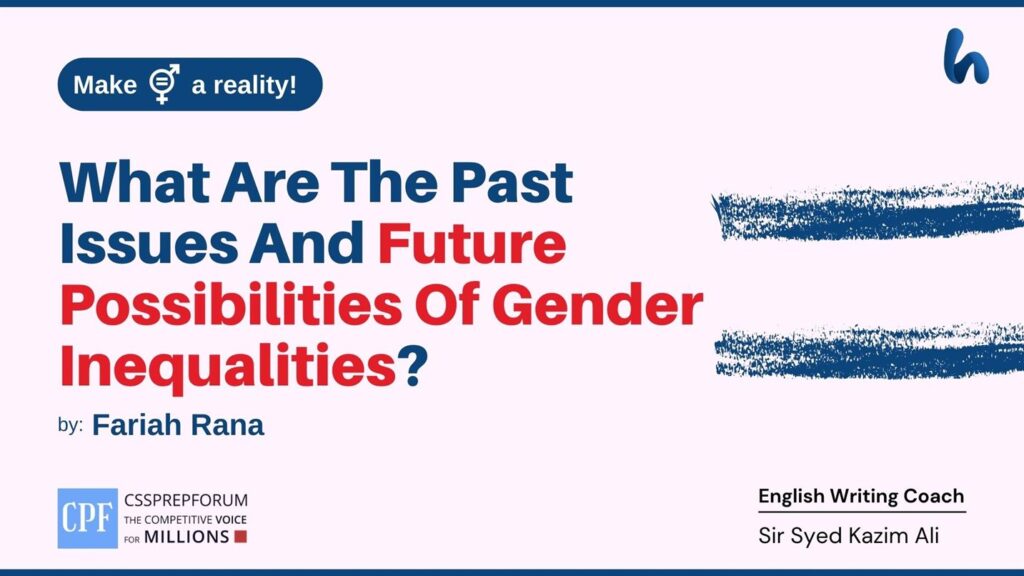
- Fariah Rana
- September 1, 2022
- Amazing Facts , Current Affairs , Daily Write-Ups , Featured , Opinions , Pakistan's Domestic Affairs
- 42057 Views
The article “Gender Inequalities Past Issues and Future Possibilities” is written by Fariah Rana .

Gender equality is the backbone of a nation’s social, economic, and political stability, ensuring equal rights and opportunities for all genders. However, no nation can rise to the height of glory and prosper by discriminating against one gender from another. Unfortunately, gender inequality has always been a part of the history of all nations, in some places greater than others. Differentiation between genders in access to resources and opportunities exists worldwide but is most common in developing nations. Differences in access to education, medical care, equal salary, fundamental rights and security are the root causes of gender inequality. Nevertheless, it can be eradicated by giving equal rights to all genders, especially women who are largely marginalized. However, the situation seems threatening; initiating awareness campaigns, making plans for women empowerment, legislation against inhuman customs and for women’s rights, increasing women’s quota in every field, and encouraging international organizations to contribute can help contain this menace. This article discusses various aspects of gender inequality in the past and the future possibilities for gender equality worldwide.
It has been imperative to understand what gender equality is to understand gender inequality better. Gender can not be studied separated from class, sexuality, race, and ethnicity. That’s when the concept of intersectionality comes to the table. Moreover, the study of men and masculinities should also be incorporated into gender studies. For instance, women are discriminated and so are minorities, so women who are also minorities have greater chances of facing inequalities in different spheres of life. Similarly, the incidences of violence women face by men are far greater than the incidences of violence they face by women, so unless men are educated and held accountable for their behaviour, it is impossible to attain gender equality.
However, it is observed by researchers, considering the areas of the economy, political representation, education, and mortality, that gender inequality has been reduced as compared to the past; unfortunately, it is still prevalent, with the same intensity, in many underdeveloped and developing countries. For instance, according to the Gender Parity Index report 2022, Afghanistan, Yemen, and Iraq are the countries where gender inequality is at its peak. Even in developed countries like Europe, the progress between 2005-2015 shows only four points rise out of a hundred. As a result, it is difficult to predict whether the positive change, if it occurs in parts of the world, will continue in the future.
Education, the access to which is a fundamental human right and should be provided worldwide to all genders without any discrimination, ceased to reach women, in particular, due to prejudices. It is shocking to know that even in the 21st century, factors prevent women from attaining this right. Taliban’s an evident example of such hindrances. Other factors, like early marriages and early pregnancies, are the main reasons for dropping out of school among women, especially in countries like Zambia. While in South Africa, harassment and sexual violence further reduce their chances of continuing their education.

One example of gender inequality in education is Tokyo Medical University 2018 reduced the test scores of women applying for medicine so that more men could secure admissions compared to women. The authorities justified this injustice in concern that women may not be able to practice their profession once married. This shows how institutional sexism is embodied in our roots and how women are treated indiscriminately instead of educating men to support their partners in having careers.
Another issue is the violence against women in its many manifestations. Such violence includes female genital mutilation, rape, sexual harassment, human trafficking, honour-based violence, and domestic violence. Numerous types of research have been conducted to identify the extent and impact of violence on women’s identity and relationships and the unreported acts of violence; furthermore, they also investigate that the political responses to these issues are usually gendered. For instance, violence against women is recognized worldwide to such an extent that to combat it; an initiative is taken in the form of International Day for the Elimination of Violence Against Women, started in 2016, followed by sixteen days of activism against gender-based violence. Similarly, in 2018, New Zealand passed legislation granting victims of domestic violence a paid leave for ten days to leave their abusive partners, protect themselves and their children, and find a new place.

Furthermore, the campaign against sexual harassment of women, the #MeToo movement in 2017, is an online campaign that started off as a campaign against the Hollywood producer Harvey Weinstein for sexual misconduct. The movement then spread as fire, and women and men shared their experiences of sexual harassment and violence under this campaign. Debates on consent, rights of one’s body, the legality of committing such acts and their punishments were also generated. This campaign showed the potential and power of social media in contemporary times and how it can be advantageous or dangerous. However, even such powerful campaigns can not deal with the deep-rooted and structural gender inequalities and power relations that still exist worldwide, such as in Japan, where the sex crime rate is continuously increasing.
Fortunately, over the last decade, many men have talked about gender equality without any shame. Research on the study of men as gendered beings is being conducted, which is indeed intellectual development. Clearly, men have been the oppressors, but they can also play their roles as collaborators in achieving gender equality. Also, Issues faced by men with poor social class and ethnic minorities should also be incorporated to have a more rational perspective on gender and inequality.
To conclude the discussion, structural and institutional causes of inequality should be addressed, and policymakers, media, and activists should consider the possibilities of an intersectional approach in different contexts. Focus on intersectionality concerning gender inequality, a continuation of the contemporary debate on the topic, and increased academic research on men’s studies and masculinity about feminism and gender should be promoted. Global women’s activism must focus on structural gendered power relations, prejudices, institutional inequalities, and future impacts. In contrast, the collaboration of men and women in the cause of gender equality and the increasing role of social media should also be highlighted, which shows an optimistic view of the future.
Want to read CSS Pakistan Affairs Solved Past Papers and learn how to attempt them to score high? Let’s click on the link below to read them all freely. All past papers’ questions have been attempted by Sir Kazim’s students, who scored the highest in the subject. CSS Solved Pakistan Affairs


More Essays
Click on any to start reading the essay.
| 1 | |
| 2 | |
| 3 | |
| 4 | |
| 5 | |
| 6 | |
| 7 | |
| 8 | |
| 9 | |
| 10 | |
| 11 | |
| 12 | |
| 13 | |
| 14 | |
| 15 |
Want to read General Science & Ability Solved Past Papers to learn how to attempt them to score high? Let’s click on the link below to read them all freely. All past papers have been solved by Miss Iqra Ali & Dr Nishat Baloch , Pakistan’s top CSS GSA coach having the highest score of their students. General Science & Ability Solved Past Papers
Articles Might Interest You!
The following are some of the most important articles for CSS and PMS aspirants. Click on any to start reading.
Recent Posts
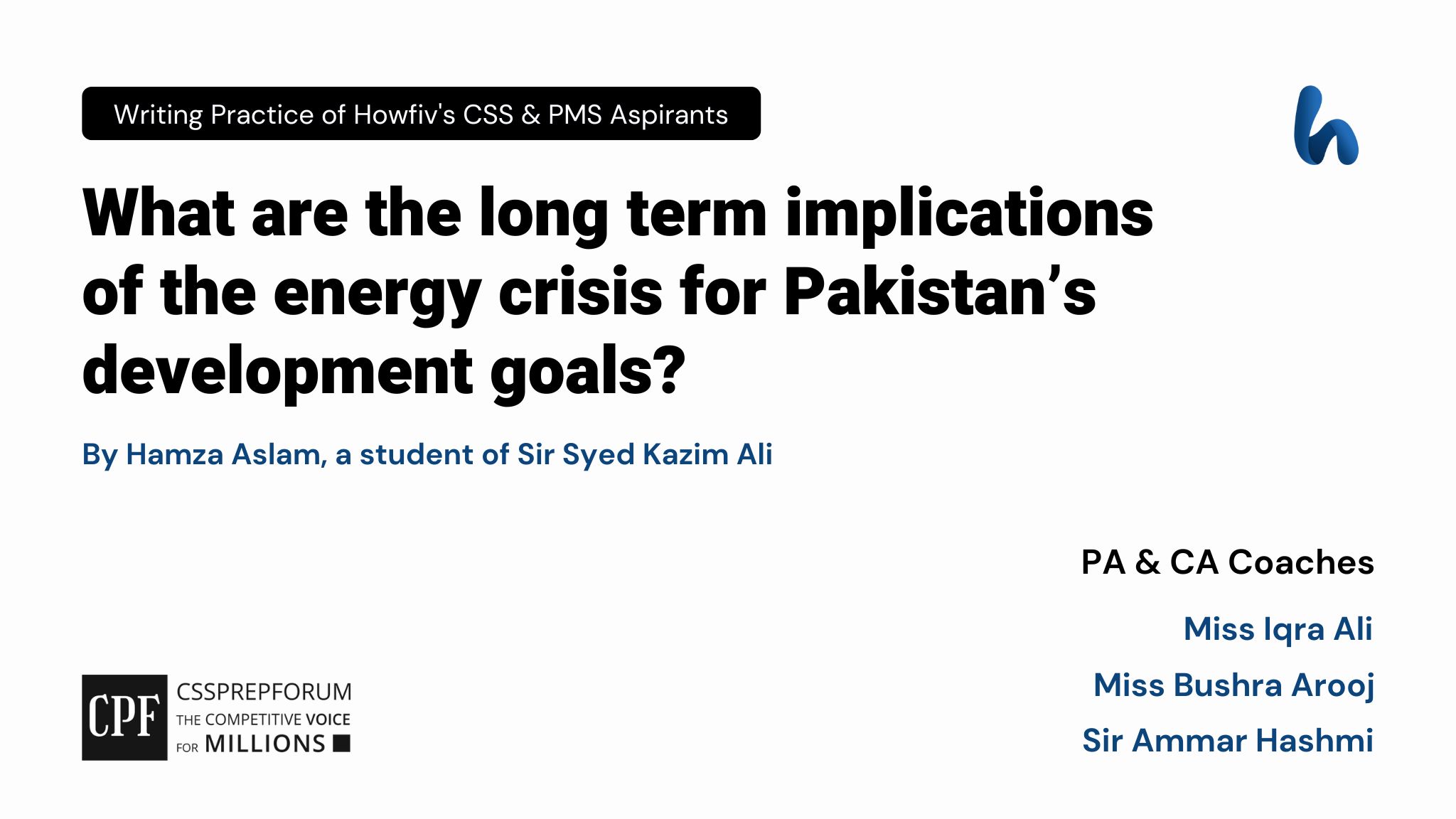
Top Categories
Cssprepforum, education company.

cssprepforum.com
Welcome to Cssprepforum, Pakistan’s largest learning management system (LMS) with millions of questions along with their logical explanations educating millions of learners, students, aspirants, teachers, professors, and parents preparing for a successful future.
Scholar Tell

Gender equality is a myth | CSS important Essays
A school of thought believes there is no discrimination on the basis of gender in the world, so no need to talk about gender inequality because no one’s rights are being violated. These people, to solidify their point, provide some examples like Article 25(2) of the Constitution of Pakistan, 1973, which guarantees that “There shall be no discrimination on the basis of sex,” and thus safeguards women’s rights. They also put up the examples of women leaders like Fatima Jinnah, Benazir Bhutto, Dr. Fehmida Mirza, et al, as women’s active participation in politics. Nonetheless, in reality, gender equality is a myth. We have made laws, but have not implemented them properly. Women’s participation in all activities of life is limited. Almost everywhere there is discrimination on the basis of gender. Rights of each gender being infringed and violated.
Females make more than 50 percent of the population of Pakistan. However, by not providing them the opportunities — and facilities — to participate in all sectors of life, we have failed to cash in on the talents and skills of a major chunk of our population and it has resulted in huge economic losses.
However, it is important to note that the problem of gender inequality has plagued not only Pakistan but almost every part of the world. Males, females, eunuchs; all genders are facing inequality all around the world. This burning issue must be resolved as early as possible in the light of the United Nations Declaration of Human Rights (UNDHR) the Article 2 of which asserts that “Everyone is entitled to all the rights and freedoms set forth in this Declaration, without distinction of any kind, such as race, color, sex, language, religion, political or other opinion, national or social origin, property, birth or other status.”
Before analyzing the issue of gender inequality in detail, it seems suitable to know as to what gender equality actually is. Generally, gender equality is considered the provision of rights only to females only, but in actuality, it is achieved when women and men enjoy the same rights and opportunities across all sectors of society, including economic participation and decision-making, and when the different behaviors, aspirations and needs of women and men are equally valued and favored.
Ours is a patriarchal society and males are dominant here in almost all fields of life. But, there rights, too, are violated and they face discrimination — though its ratio is meagre. It is often observed that while numerous men have queued up in order to get something — for instance, a ticket — a female comes and gets that before them; bypassing all the males who have been waiting for their turn for many hours. Although it is considered an act of courtesy in our society, yet this is violation of males’ rights.
Moreover, in public sector as well as private sector, women not only have quota but some positions like office assistant, personal secretary, receptionist, etc., are also almost every time offered only to females. It’s also a common observation in many offices that men share the most part of the work burden.
To present the other side of the story, it is pertinent to mention that mostly females are the victims of the violation of their rights.
In Pakistan, we often read news about the instances of ‘vani’, an ugly tradition where young women are traded between families in resolution of a dispute; ‘swara’, a deplorable practice under which minor girls are given away in marriage to the enemy’s family as a symbol of ‘lasting and effective’ peace between two disputing parties, etc., which means that girls are treated like a commodity. Moreover, in our common households, boys are given preference over girls in terms of provision of basic necessities of life. Unequal treatment of boys and girls can be seen in almost every facet of life. For instance, it is rampant in terms of provision of food as well as education; if a son wants to go for an outing with his friends, he is encouraged to do so. But, if similar wish is expressed by a daughter, she would be snubbed and would not be allowed owing to “traditions” of the society. Domestic violence is also ubiquitous in Pakistan and the findings of Pakistan Demographic and Health Survey (PDHS) speak volumes about this fact. The PDHS has found that 43 percent of women and 35 percent of men in Pakistan deem it absolutely justified if a husband inflicts violence on his wife in case she argues with him.
The cancer of honour killings has also been rampant in Pakistan as according to a report by Aurat Foundation around 1,000 women and to another one by the Human Rights Commission of Pakistan (HRCP) around 900 women annually are killed in the name of honour in Pakistan; let alone the actual figure which must be much higher than those reported because these organizations collect data only from newspapers and other like sources.
The chronically dejected class, which consists of transgenders or eunuchs, is the most vulnerable in our society. As per the findings of a recent survey, 60 percent of the people of Pakistan do not want to befriend the eunuchs; only 14 percent replied in affirmative. The birth of a eunuch is considered not less than a torment. Most families virtually abandon them and leave them on the mercy of the fate. Resultantly, most of them end up being a beggar, a street singer or a dancer. They are even denied their right to inherit as they are not given proper share in the property left by their parents. Besides this inhumane treatment, almost all families don’t want to send them to schools and colleges for getting education. And, if they howsoever successfully get education, then jobs are not offered to them despite possessing the qualities required to perform the job effectively and efficiently.
Although it was like a whiff of fresh air when in 2012, the Supreme Court of Pakistan (SC) ruled that eunuchs be given equal rights as any other citizen of the country, yet the situation on ground is still far from satisfactory. We need to recognize that eunuchs are not less talented than the individuals belonging to other genders. Hardly would have anyone known that Cai Lun, a Han dynasty Chinese official who is traditionally regarded as the inventor of paper and the papermaking process was a eunuch.
In India, the transgenders or eunuchs are constitutionally a third category of gender, and the Indian government has taken steps in order to uplift them from social backwardness and to bring them into society’s mainstream.
When it comes to civil services of Pakistan, a 10 percent quota is reserved for females. At provincial level, also, women have a specific quota in provincial government services; for instance, it is 15 percent in Punjab, 7 percent in Sindh, 5 percent in Baluchistan and 10 percent in Khyber Pakhtunkhwa. But, when it comes to transgenders, mum’s the word.
In private sector educational institutions and business concerns, the situation is appalling. In this sector, males are offered more salaries than the female counterparts. Mostly, females are offered a job to work as a showpiece while sitting on the front desk of the office. They are mostly given jobs as telephone operator or personal secretary. It is another form of discrimination which should be avoided and a culture of meritocracy should be promoted instead.
When it comes to the Armed Forces of Pakistan, we see that there are only 4000 females among 617,000 active personnel. There number is really scant and it should be increased to encourage more and more women to join the armed forces. After independence, an attempt of introducing combat training program in Pakistan armed forces was made by Begum Ra’ana Liaqat Ali Khan; but her attempt was foiled by General Frank Walter Messervy — First Commander-in-Chief of Pakistan Army from 15 August 1947 to 10 February 1948. In 1949, the first lady took personal initiatives and established her own Pakistan Army Women National Guard (WNG) with few combat courses. The unit’s first GOC and chief controller was Begum Ra’ana, with the rank of a Brigadier. After a long struggle, in 2002, Ms. Shahida Malik became the first female officer to reach the rank of Major General in Pak Army.
On 14th July 2014, 24 female officers of Pakistan Army successfully completed a paratroopers’ course, becoming the first group of women to do so in Pakistan military history and proved that females are not less competent than males; they can do everything, if they are provided proper facilities.
Prior to this, in 2003, Pakistan Air Force had inducted the first batch of women as general duty pilots which joined the combat services of PAF in 2006.
In terms of women’s participation in country’s legislative business, we find that out of 342 seats in the National Assembly of Pakistan, only 60 have been reserved for women — not a single one for the third gender. After brief study of the parliaments of other countries, it dawns on us that not only Pakistan’s but almost every parliament in the world is male-dominated. How ironic it is that the absolute authority to making laws on women rights lies in the hands of men!
The Global Gender Gap Report 2015, launched by the Davos-based World Economic Forum, ranked Pakistan at 144th position among 145 countries. This shows our seriousness in eradication of gender inequality in Pakistan.
It’s common observation even in this modern era that after an ultrasound of a pregnant woman, if it is found that the baby would be a girl, many a time the mother is made to go through abortion. But, if the fetus is of a male, then that woman is treated like a princess or a queen.
Even in a country like United States of America, which boasts to be the world’s lone superpower and the torchbearer of human rights, all the presidents had been males. No woman has ever been provided an opportunity to lead the country.
The same situation is with the United Nations. All of the eight secretaries-general of the UN — the last being Ban Ki-moon in the list — were males; no woman has ever been elected to this coveted post.
In the Muslim world, the situation is not much different. For instance, in Saudi Arabia gender inequality prevails as women were not allowed to drive cars for a long time. However, a campaign in 2011 had done a little and some women are now allowed to drive cars and they are being issued driving licenses.
In a nutshell, gender inequality has permeated the world and it is right to say that ‘gender equality is a myth’. However, if the abovementioned issues are resolved, this myth can be broken. It is the only way to promote gender equality because it is a prerequisite that must be fulfilled if a country wants to tread the path that leads to development and prosperity.
It is opportune to conclude the above discussion in the words of former UN Secretary-General Kofi Annan who once said, “Gender equality is more than a goal in itself. It is a precondition for meeting the challenge of reducing poverty, promoting sustainable development and building good governance.”
Note: Add outline and more content if necessary.
Gender (Men/Women/Trans-gender) Equality a Popular Slogan Essay(CSS/BA/B.ed)
Gender equality is not only a vital right of human, but also a compulsory foundation for a peaceful and prosperous world. Before discussing the issue of gender inequality in detail, it’s important to know as to what gender equality actually is
Gender equality is also known as sexual equality. It is the state of equal facilities of approach to resources and opportunities regardless of men and women distinction. It also includes the rights of economic participation and making decision. It is the state of appreciating different aspirations and requirements equally, regardless of gender.
Gender equality is attained when women, men, girls and boys have equal rights to achieve opportunities, and the right to live their own lives and contribute to the progress of society. It can be done by equitable distribution of power, rights and opportunities in communities.
Gender freedom is eroding our public and degrading all of us. It is not just a human power matter it is an enormous waste of the human’s potential to develop world. If we deny women equal rights then we deny half the world’s population a possibility to spend life at its fullest. Women’s equality in political, economic and social will benefit all the masses of the world. We can diminish impairment and can work together for equality of human rights regardless of men and women concept.
More than 50 percent population of Pakistan consists of women. If they are not provided with opportunities and facilities like men then we must be ready for a big loss in economic development and other areas of progress.
It’s important to notice that the problem of gender inequality has not plagued only in Pakistan but almost every area of the world. Males, females and trans-genders: all are facing this issue. This burning issue must be solved as early as possible in the light of UNDHR. In article 2 of UNDHR it has been asserted that
“Everyone is entitled to all the rights and freedoms set forth in this Declaration, without distinction of any kind, such as race, color, sex, language, religion, political or other opinion, national or social origin, property, birth or other status.”
It is common that gender equality is considered as the provision of rights to females only. It is totally misconception. Actually Gender equality is achieved only when men, women and trans-genders enjoy same facilities and opportunities across all the sectors of society including economic decisions and legislative sectors.
Our society can be considered as patriarchal society and men are dominant here in all fields of life. But there rights have been violated also and they face distinctions indeed. For instance it has been observed when many men are queued up for getting something like a ticket, females are preferred first no matter they come last or before. Although it is considered as an act of virtue in our society but it is totally violation of men rights.
In addition to this violation of men’s rights in public as well as private sectors some specific positions and seats are always announced for women like PA, receptionist etc. which is totally wrong. It has been observed that man share the most part of burden.
To understand the other side of story it is important to know that most of the females have been the victims of violation of their rights too.
There is an ugly tradition in most areas of Pakistan know as vani in which young women are traded in families for resolving disputes. Swara, is also an practice in which small girls are married to enemy’s family as a symbol of peace between two disputing parties. It shows that women have been treated like a commodity. In most of our areas boys are always preferred over girls in terms of basic facilities of life. This inequality of gender can be seen in almost all areas of life. It is most common in terms of provision of food and education.
The critically rejected class of gender is trans-genders or eunuchs. This is the most vulnerable thing in our society. The birth of eunuchs is considered as torment and parents abandon them and leave this type of child on the mercy of fate. Most of them prefer being a beggar or dancer. They are even denied their right of inheritance as they are not given their property share. They are not provided with the facilities of education. If somehow they get education they are not provided with jobs effectively and efficiently.
However, it is right to say that “ gender equality is a myth ”. If above discussed issue are solved then this myth can be broken.
see more>
- Privacy Policy
- Our Authors
- Subscribe Us
- Google Plus

Essay Outlines: Gender Discrimination in Developing States
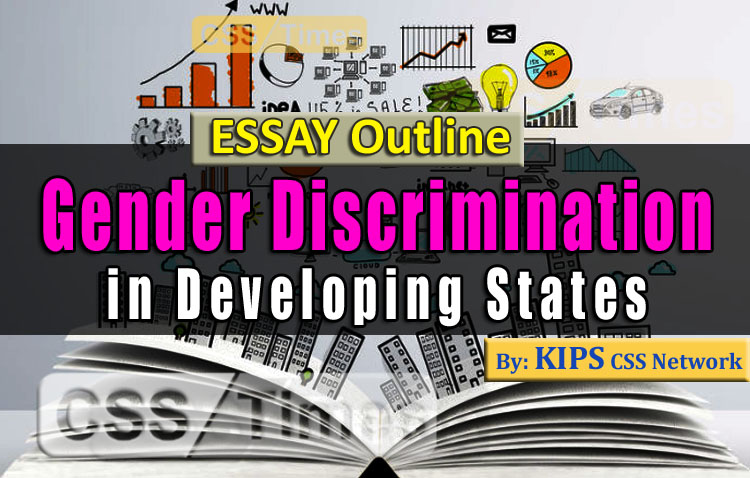
Table of Contents
1. Introduction
2. historical perspective of gender discrimination and priority to male gender – the dominant gender in society., 3. causes of gender discrimination.
3.1) Male dominant society, putting an axe over female voice and rights. 3.2) Third gender is considered as alien, and not a part of society. 3.3) Brutal practice of honor killings in Pakistan endangers the lives of females and the third gender. i.e: Qandeel Baloch murder and transgender Alisha murdered in Peshawar in 2016.
Check Also: Essay Outline: Energy Crisis in Pakistan: Consequences and Recommendations
4. gender discrimination in developing states:.
4.1) Impacts of gender discrimination. Impacts on women a) Low female literacy rate as compared to males in developing countries like Pakistan, Bhutan and Nigeria, as people are unaware about the importance of female education. b) Female employment rate in Pakistan and India is 28% and 29% respectively, as compared to 80% in Netherland and 65% in China, because developing nations underestimate the importance of female in national development. c) Increasing nation of crimes against women e.g. harassment, acid crimes, abduction, trafficking etc. • Bangladesh is considered as the country with largest number of acid attacks. It is also ranked 142nd out of 187 countries in 2013 on the Human Development Index and 115 out of 149 countries on Gender Inequality Index. • National Crime Records Bureau states in 2010-1 bride murdered every hour over dowry demands in India. Impacts on 3rd Gender a) The ratio of population is divided into two specific genders, as in Pakistan male: female ratio is 49.51, but no attention towards approximately 3 lach third gender population. b) No jobs and education facilities provided to third gender in developing states, as they are bound to engage themselves in inappropriate activities to earn for survival. c) Third gender is getting obstacles among their way of self actualization, as they are not considered as a part of respectable fields like police, politics and medicine.
Check Also: Essay Outline: Economic Prosperity is Directly Proportional to Literacy Rate
5. comparison of developing states with mdcs in gender discrimination:.
5.1) Australia and Germany, identified third gender as a part of society, and provided them birth certificates with gender “X”, whereas developing states are unable to provide them identity. 5.2) Countries like Andorra, Czech and Belgium are sustaining 100, 99 and 99% of female literacy rate whereas it’s 12% in Afghanistan, 38% in Bhutan and 42% in Pakistan. 5.3) In U.S.A. third gender is getting prominent over media, as they are getting popular over shows like “Dancing with stars”, whereas in developing states they are considered as sign of embarrassment and social taboo.
6. Latest positive steps taken by developing countries to overcome gender discrimination:-
6.1) First women bank has been established in Pakistan with 50% of share holders and more than 50% of female employees, to utilize the potential of women in economic stability of nation. 6.2) UNDP in Pakistan focusing over gender equality and women’s empowerment to achieve millennium and sustainable development, and ensuring that women must have a real voice in all governance institutions. 6.3) “The Hamsafar”, organization in India, that is taking care of the rights of third gender, India has also considered third gender as a part of nation, and has updated the passport application forms with three options, as male, female and Eunuch for third gender. 6.4) Pakistan has considered third generation as civilians of Pakistan and has given them their own I D cards and also provided them voting rights.
Check Also: Essay Outline | Flaws in Our Education System are Causing Some of Our Failures
7. changing situation in developing countries regarding women empowerment..
1. In Pakistan Present Govt. (2014) being a state part to the convention on elimination of All Forms of Discrimination Against Women (CEDAW) lead the govt to take measures to ensure women’s rights as envisaged in CEDAW. 2. Punjab Protection of Women against Violence Act 2016 passed to provide security, rehabilitation and relief against violence on women. During the previous govt. (2008-2013) 2. 26 Shaheed Benazir Bhutto enters established for women for immediate relief to female victims of violence – Around 1 million women could receive direct assistance from Benazir Income Support programme while National Commission on the status of women was strengthened to monitor the violation of women rights. 3. Adoption of Protection Against Harassment of Women at Workplace Act 2010. 4. Acid control and Acid Crime Act and prevention of Anti Women Practices Act.
Check Also: Essay Outline: The Implications of Sectarian Militancy and Ethnic Violence in Muslim World
8. suggestions to neutralize the issues created by gender discrimination:.
8.1) Required to promote the importance of female education, and needed to enhance their enrollment in education sectors. 8.2) Females must be considered as the main part of society and their talent should be utilized to bring political, social and economic development. 8.3) Needed to bring change in social behavior, and third gender should be considered as a part of society, and they should get a chance to enhance their capabilities in better way. 8.4) Legislative and constitutional protection should be provided to third gender and their rights must not be neglected.
9. Conclusion
About the author
KIPS CSS Network
You may also like.
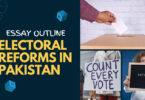
Essay Outline: Electoral Reforms in Pakistan:...

Health for All | Essay Outline for CSS PMS
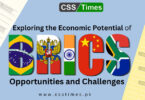
Exploring the Economic Potential of BRICS Countries:...

Art and Morality Essay Outline

Instruction in Youth is Like Engraving in Stone |...
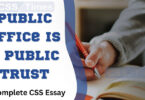
Public Office is a Public Trust | Complete CSS Essay
Leave a comment x.
[…] Check Also: Essay Outlines: Gender Discrimination in Developing States […]
Home — Essay Samples — Social Issues — Gender Equality — Gender Equality: The Equal Standing of Boys and Girls
Gender Equality: The Equal Standing of Boys and Girls
- Categories: Boy Gender Equality Girl
About this sample

Words: 536 |
Published: Jun 21, 2024
Words: 536 | Page: 1 | 3 min read
Table of contents
The importance of gender equality, the challenges boys and girls face, working towards gender equality.

Cite this Essay
Let us write you an essay from scratch
- 450+ experts on 30 subjects ready to help
- Custom essay delivered in as few as 3 hours
Get high-quality help

Verified writer
- Expert in: Sociology Social Issues

+ 120 experts online
By clicking “Check Writers’ Offers”, you agree to our terms of service and privacy policy . We’ll occasionally send you promo and account related email
No need to pay just yet!
Related Essays
2 pages / 925 words
2 pages / 1005 words
1 pages / 2218 words
1 pages / 944 words
Remember! This is just a sample.
You can get your custom paper by one of our expert writers.
121 writers online
Still can’t find what you need?
Browse our vast selection of original essay samples, each expertly formatted and styled
Related Essays on Gender Equality
Women have fought for equality and agency in a predominantly patriarchal society. In the book "The Dressmakers War" by Mary Chamberlain, the struggles and triumphs of women during World War II are vividly portrayed, offering a [...]
A college education is more valuable than ever. While some may argue that the rising cost of tuition makes higher education less accessible, the benefits of earning a degree far outweigh the initial investment. This essay will [...]
The Women's World Cup is not just a sporting event but a platform for empowerment, equality, and societal change. Over the years, it has evolved from being solely about athletic competition to symbolizing progress and breaking [...]
Cultural boundaries and differences in Afghanistan are complex and multifaceted, reflecting the country's rich history, diverse ethnic groups, and unique cultural practices. In today's globalized world, understanding these [...]
Are women too feminine to fight; do they not have the courage men have? Women are just as courageous as men (if not more) and also just as powerful. I think the real reason women haven’t been allowed in combat is because there [...]
Women’s rights are a global issue. Nowhere in the world do women have the same liberties as male counterparts. In some parts of the world women are expected to be housewife’s when they have the potential to be so much more. Men [...]
Related Topics
By clicking “Send”, you agree to our Terms of service and Privacy statement . We will occasionally send you account related emails.
Where do you want us to send this sample?
By clicking “Continue”, you agree to our terms of service and privacy policy.
Be careful. This essay is not unique
This essay was donated by a student and is likely to have been used and submitted before
Download this Sample
Free samples may contain mistakes and not unique parts
Sorry, we could not paraphrase this essay. Our professional writers can rewrite it and get you a unique paper.
Please check your inbox.
We can write you a custom essay that will follow your exact instructions and meet the deadlines. Let's fix your grades together!
Get Your Personalized Essay in 3 Hours or Less!
We use cookies to personalyze your web-site experience. By continuing we’ll assume you board with our cookie policy .
- Instructions Followed To The Letter
- Deadlines Met At Every Stage
- Unique And Plagiarism Free
Thank you for visiting nature.com. You are using a browser version with limited support for CSS. To obtain the best experience, we recommend you use a more up to date browser (or turn off compatibility mode in Internet Explorer). In the meantime, to ensure continued support, we are displaying the site without styles and JavaScript.
- View all journals
- Explore content
- About the journal
- Publish with us
- Sign up for alerts
- 18 June 2024
How climate change is hitting Europe: three graphics reveal health impacts
- Carissa Wong 0
Carissa Wong is a science journalist in London.
You can also search for this author in PubMed Google Scholar
A water spray helps people in Bratislava to cool down on a hot summer day. Credit: Bilge Kagan Kaya/Alamy
Global warming is costing lives, deepening health inequality and driving the spread of disease-carrying ticks and parasites across Europe, according to a major report.
The report reviewed hundreds of studies on the health effects of climate change — as well as the actions being taken in response — in Europe. Climate and health researcher Rachel Lowe and her colleagues tracked 42 indicators, including those on heat-related deaths, the spread of infectious diseases and trends in research on health and climate change.
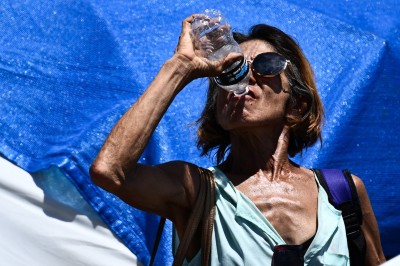
Extreme heat harms health — what is the human body’s limit?
“We really need some drastic action to be taken by European countries to help keep the European population, and also populations across the globe, safe from the health impacts of climate change,” says Lowe, who is at the Barcelona Supercomputing Center and at the Catalan Institution for Research and Advanced Studies in Spain.
The report, published last month in Lancet Public Health 1 , is the second — after one published in 2022 2 — from a study called ‘The Lancet Countdown: Health and Climate Change in Europe’.
“The report emphasizes the alarming increase in mortality and morbidity linked to rising temperatures, and the proliferation of climate-sensitive diseases,” says Ana Raquel Nunes, a health and environment researcher at the University of Warwick, UK.
Researchers say that further studies should take a holistic approach to the climate–health nexus. “You can’t treat all these health impacts of climate change in isolation,” says Ruth Doherty, a climate-change and health researcher at the University of Edinburgh, UK. “We really need to know about how these multiple exposures affect the population.”
In three graphics, Nature outlines how a warmer world is affecting health and research across Europe.
Deadly heat
Lowe and her colleagues used mortality and temperature data, as well as prior evidence for how heat influences mortality, to estimate that, from 2003–12 to 2013–22, heat-related mortality increased by an average of 17 deaths per 100,000 people across Europe. The increase in heat-related mortality was higher in women compared with men (See ‘Heat kills’).
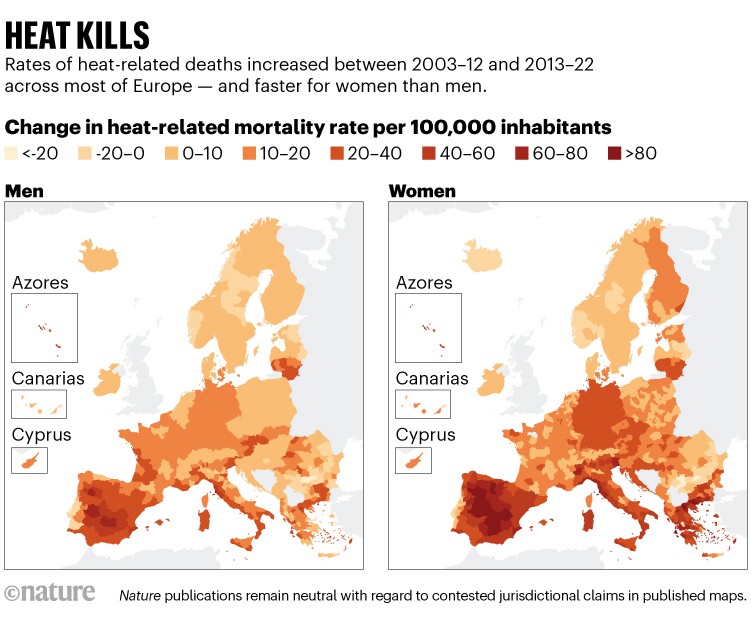
Source: Ref 1.
“Gender disparities may be explained by differences in terms of losing heat from the body and maximum sweat rates,” says Kim van Daalen, who studies climate change, disease and gender inequity at the Barcelona Supercomputing Center. Women might also generally be at greater risk of heat stress after ovulation, when they tend to have higher body temperature, she says.
Another factor that could be driving the gender gap is that women generally reach older ages than men, and older people are generally more vulnerable to heat-related stresses, says Lowe. Older people are also more likely to live alone, which puts them in greater danger from heat, she says.
Ticks and parasites
Warmer temperatures are enabling disease-carrying parasites to expand into more regions and spurring the growth of tick populations. One pathogen that is becoming more widespread owing to climate change is the single-cell parasite Leishmania infantum . It is transmitted to people when female sandflies ( Phlebotomus sp. ) bite human skin to feed on blood. The parasite usually causes skin ulcers across the body, which can be debilitating. In extreme cases, it can cause fevers and the swelling of the spleen and liver, and could be fatal.
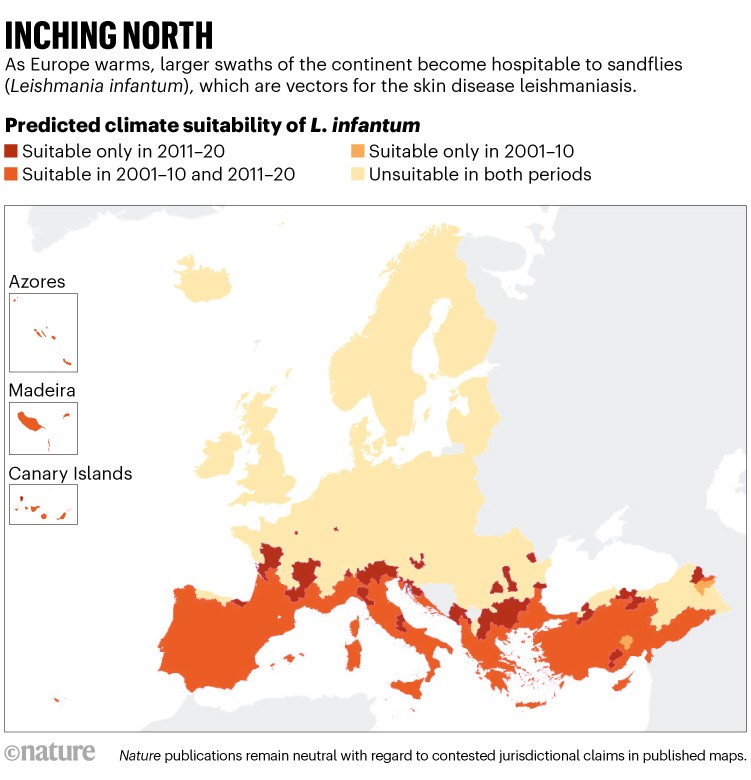
The researchers estimated that warmer and more-humid conditions across Europe have enabled sandflies and the parasites they carry to spread north into new territories. Their range was wider in the 2010s than in the 2000s. “Rising temperatures create more favourable conditions for sandflies to survive and reproduce,” says van Daalen. “Warmer conditions can also accelerate the life cycle of the parasite within sandflies,” she says (See ‘Inching North’).
The team also found that warmer temperatures have made Europe more suitable for the tick Ixodes ricinus , which can transmit a range of diseases when it bites people. “Tick-borne diseases, such as Lyme disease and tick-borne encephalitis, cause symptoms ranging from flu-like illness to severe neurological and cardiovascular complications, leading to missed work, long-term disability and substantial health-care costs,” says van Daalen.
Across most of the continent, I. ricinus found a more hospitable climate to feed and grow in 2013–22 than it did in 1951–60, as measured by the average number of months per year when temperatures were optimal for the juvenile stage of its life cycle.
Publishing boom
As the world warms, research on how climate change intersects with Europeans’ health has intensified, as seen in the number of papers tracked in the open-access database OpenAlex. The researchers counted hundreds of studies on how climate change and Europeans’ health intersect, published between 1991 and 2022. The majority of those studies focused on how global warming affects health, but some also looked into the greenhouse gases emitted by health-care systems, or how to protect people from climate change that is already happening (See ‘Hot topic’).

The authors also found that around 2% of the studies published in 2022 on climate health referenced equality, equity or justice. “This highlights a substantial gap in research,” says van Daalen. “To properly respond to the climate-related health impacts, it is important to understand which populations are disproportionately affected and most at risk,” she says.
doi: https://doi.org/10.1038/d41586-024-02006-3
Van Daalen, K. R. et al. Lancet Public Health https://doi.org/10.1016/S2468-2667(24)00055-0 (2024).
Article PubMed Google Scholar
Van Daalen, K. R. et al. Lancet Public Health 7 , e942–e965 (2022).
Download references
Reprints and permissions
Related Articles

- Climate change
- Public health

How farming could become the ultimate climate-change tool
Spotlight 19 JUN 24

How to address agriculture’s water woes

Extending the Sustainable Development Goals to 2050 — a road map
Comment 17 JUN 24

‘It can feel like there’s no way out’ — political scientists face pushback on their work
News Feature 19 JUN 24

Twelve scientist-endorsed tips to get over writer’s block
Career Feature 13 JUN 24

Elite researchers in China say they had ‘no choice’ but to commit misconduct
News 11 JUN 24

What causes long COVID? Case builds for rogue antibodies
News 13 JUN 24

Huge amounts of bird-flu virus found in raw milk of infected cows
News 05 JUN 24
Underfunding cannabis research hampers sensible policymaking and boosts the black market
Correspondence 04 JUN 24
ZJU 100 Young Professor
Promising young scholars who can independently establish and develop a research direction.
Hangzhou, Zhejiang, China
Zhejiang University
Qiushi Chair Professor
Distinguished scholars with notable achievements and extensive international influence.
Research Postdoctoral Fellow - MD
Houston, Texas (US)
Baylor College of Medicine (BCM)
Postdoctoral position for EU project ARTiDe: A novel regulatory T celltherapy for type 1 diabetes
Development of TCR-engineered Tregs for T1D. Single-cell analysis, evaluate TCRs. Join INEM's cutting-edge research team.
Paris, Ile-de-France (FR)
French National Institute for Health Research (INSERM)
Postdoc or PhD position: the biology of microglia in neuroinflammatory disease
Join Our Team! Investigate microglia in neuroinflammation using scRNAseq and genetic tools. Help us advance CNS disease research at INEM!
Sign up for the Nature Briefing newsletter — what matters in science, free to your inbox daily.
Quick links
- Explore articles by subject
- Guide to authors
- Editorial policies
- Beginner's Guide
- Past Papers
- CSP Members
COMMENTS
Gender inequality has halted the socio-economic progress and stability of a nation, among all other concerns. It is the root cause of depression in the society. Gender equality is a myth because women do not possess those rights that men have, especially in Pakistan. They face serious problems when they go out of the houses, even though many ...
CSS 2016 Solved Essay | Is Gender Equality a Myth? | CSS and PMS Solved Essays by Sir Syed Kazim Ali Students. ... Keeping in mind that gender inequality is a global phenomenon, United Nations has taken steps to tackle the situation head-on. Nevertheless, the emancipation of women still requires concrete steps, including setting a seal on the ...
Written by CSS Times. Gender equality is achieved when women and men enjoy the same rights and opportunities across all sectors of society, including economic participation and decision-making, and when the different behaviors, aspirations and needs of women and men are equally valued and favored. Let's explore the concept of feminism so that ...
CSS 2021 Solved Essay | Gender Equality: A Popular Slogan. Maleeha Sattar, a Sir Syed Kazim Ali student, has attempted the CSS 2021 essay "Gender Equality: A Popular Slogan" on the given pattern, which Sir Syed Kazim Ali teaches his students. Sir Syed Kazim Ali has been Pakistan's top English writing and CSS, PMS essay and precis coach with the highest success rate of his students.
Sir Abrar Ahmed Butt (PAS, CSS 2017) discusses the "Essay of the Month" with Nearpeer Community in his free Live Session. Essay of the Month Topic: "Gender E...
Introduction. Gender equality has been a rallying cry for social justice movements around the world. It is a concept that resonates with people across cultures and generations, representing a vision of a fair and equitable society. However, the achievement of gender equality is far from simple. It requires addressing deep-rooted societal norms ...
This video produced by the school of thought is about the essay which has been asked twice in the CSS and exams. The topic is gender equality is a myth. Gend...
Gender Equality is a Myth_ _ CSS Essay - Free download as PDF File (.pdf), Text File (.txt) or read online for free. The document discusses gender equality and feminism. It defines feminism as the belief that everyone should have equal rights and opportunities regardless of gender. It argues that gender inequality limits freedom and traps people in narrow roles based on gender.
Answer 2: The gender inequality essay tells us that gender inequality impacts us badly. It takes away opportunities from deserving people. Moreover, it results in discriminatory behaviour towards people of a certain gender. Finally, it also puts people of a certain gender in dangerous situations. Share with friends.
Gender Inequality | Editorial. PAKISTAN is the second worst country to be a woman when it comes to gender equality, declares a recent World Economic Forum report. Ranking 148 out of 149 countries in the Global Gender Gap Index 2018 — which incorporated the latest statistics from international organisations along with a survey of executives to ...
Gender Equality is a Myth_ _ CSS Essay - Free download as PDF File (.pdf), Text File (.txt) or read online for free. The document discusses gender inequality and feminism. It argues that feminism aims for equal rights and opportunities regardless of gender. It provides examples of how gender stereotypes and discrimination negatively impact both women and men.
Gender disparity is one of the most disturbing and challenging global issues in the contemporary world. In general, this social phenomenon may be described as specific differences in access to status, resources, and well-being for women and men. Gender disparity traditionally favors men and is frequently institutionalized through social norms ...
2- Discuss the Socio Economic Rights of women in Islam (2012- do not remember the exact wording of the title- apologies) 3- Gender Equality is a Myth. Analyzing (1) Can (So this is a question- the conclusion of the Essay must have a definite Answer: Yes/No) Women (weaker sex, the better part, the better half etc) be Equal (Equality in what ...
Activists are charting unfamiliar territory, which this essay explores. "Men built this system. No wonder gender equality remains as far off as ever.". - Ellie Mae O'Hagan. Freelance journalist Ellie Mae O'Hagan (whose book The New Normal is scheduled for a May 2020 release) is discouraged that gender equality is so many years away.
In this lecture I have discussed the topic of gender inequality. I have elaborated both dimensions of the topic. You can write in favour or against it but yo...
The article "Gender Inequalities Past Issues and Future Possibilities" is written by Fariah Rana. Gender equality is the backbone of a nation's social, economic, and political stability, ensuring equal rights and opportunities for all genders. However, no nation can rise to the height of glory and prosper by discriminating against one ...
Gender equality is a myth | CSS important Essays. September 16, 2021 by Medico Writer. A school of thought believes there is no discrimination on the basis of gender in the world, so no need to talk about gender inequality because no one's rights are being violated. These people, to solidify their point, provide some examples like Article 25 ...
Gender (Men/Women/Trans-gender) Equality a Popular Slogan Essay (CSS/BA/B.ed) September 24, 2021June 18, 2021 by thetopers. Gender equality is not only a vital right of human, but also a compulsory foundation for a peaceful and prosperous world. Before discussing the issue of gender inequality in detail, it's important to know as to what ...
Comparison of developing states with MDCs in gender discrimination: 5.1) Australia and Germany, identified third gender as a part of society, and provided them birth certificates with gender "X", whereas developing states are unable to provide them identity. 5.2) Countries like Andorra, Czech and Belgium are sustaining 100, 99 and 99% of ...
This can result in a lack of female representation in these fields, which perpetuates the cycle of gender inequality. Similarly, boys are often discouraged from showing emotions or pursuing interests that are considered "feminine," which can lead to toxic masculinity and mental health issues. ... Gender Inequality Essay. Women's rights are a ...
St. Lucia has enviably high female labor force participation rate and strikingly low participation gap vis-à-vis male. The latter is lower than OECD average and way below world average. Women are also more educated than men. Yet, using a micro dataset of St. Lucia Labor Force Survey over the period 2016-2021, our analysis points towards disproportionate effects of childcare on female ...
Thanked 10 Times in 8 Posts. Outline Evaluation. What is Gender Inequality: A) Women are suffering from social injustice in education opportunities, health facilities, social prestige, property inheritance and religious esteem. B) Women are faced with the savage and brutal customs of addo baddo, pait likkhi, swara, vani, watta satta, female ...
Two broad contrasting demographic trends present challenges for economies globally: countries with aging populations, often advanced economies and increasingly emerging markets, anticipate a significant shrinking of the labor force, with implications for growth, economic stability, and public finances. Economies with rapidly growing populations, as is the case in many low-income and developing ...
Global warming is costing lives, deepening health inequality and driving the spread of disease-carrying ticks and parasites across Europe, according to a major report.
Gender studies is a myth. Introduction Gender equality: an understanding. Islam- The elimination of gender inequalities Gender inequalities: Pakistan 1. In social Domain a. Patriarchal Society b. Domestic violence c. Misinterpretation of religion d. Stereotype socio-cultural norms 2. In Political domain a) Weaker legislation b) Less quota 3.